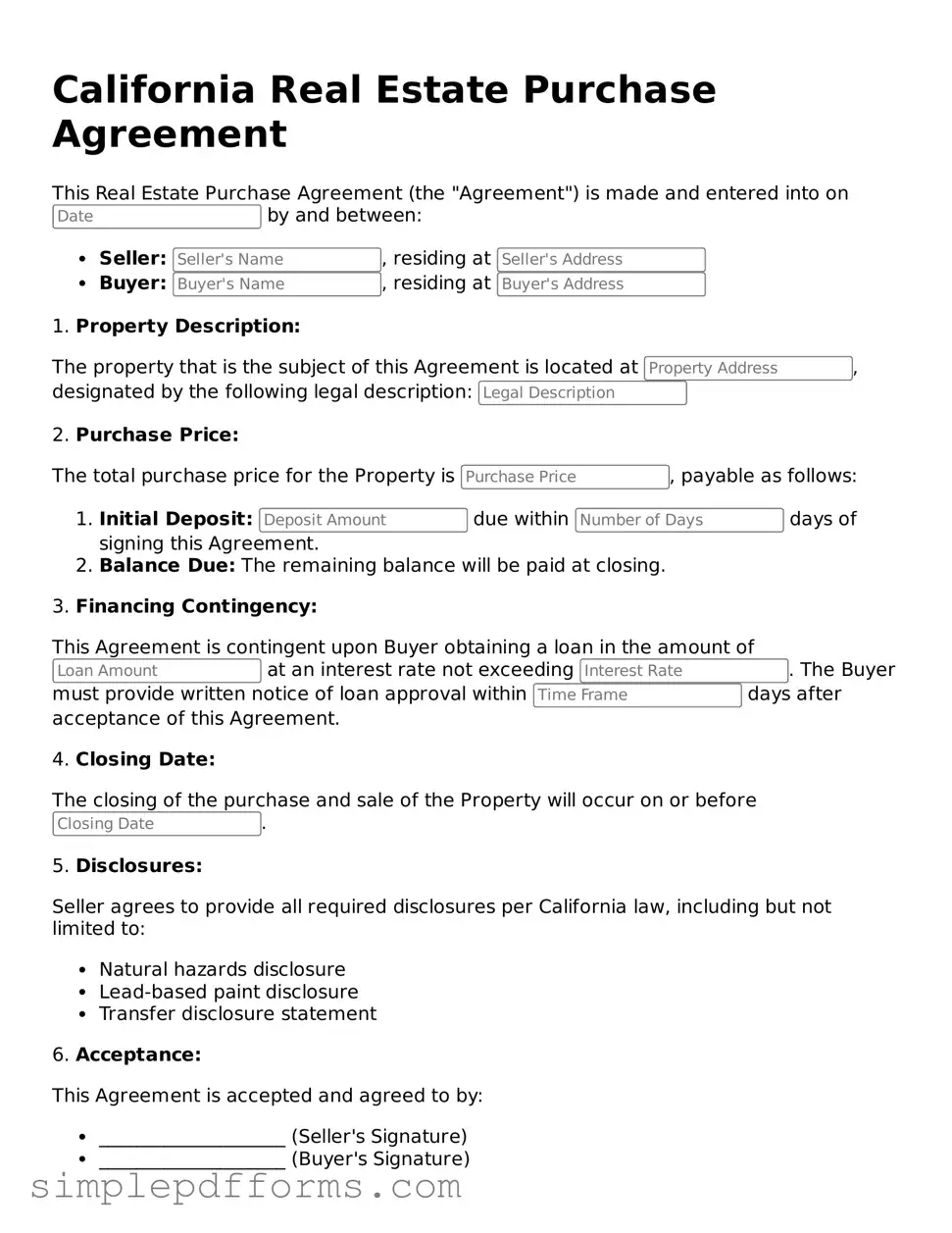Attorney-Verified Real Estate Purchase Agreement Document for California State
The California Real Estate Purchase Agreement is a legal document used in real estate transactions within California. It outlines the terms and conditions under which a buyer agrees to purchase a property from a seller. Understanding this form is essential for both parties to ensure a smooth transaction.
Open Real Estate Purchase Agreement Editor Now
